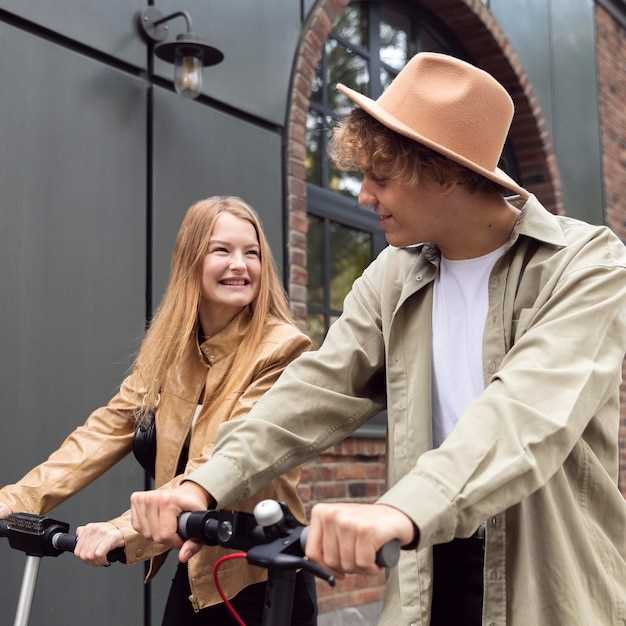
Common Questions New Riders Ask Before Buying a Bike

Choosing the right bike can be an overwhelming experience for new riders. With so many options available, it’s essential to ask the right questions to ensure that you make an informed decision. Whether you’re considering a road bike, mountain bike, or hybrid, understanding your needs and preferences is crucial. This guide aims to address the most common FAQs that new riders typically encounter during the purchasing process.
Seeking advice from experienced cyclists can provide valuable insights. New riders often want to know about the best bike brands, suitable models for beginners, and essential features to consider. Factors like bike fit, comfort, and ride style can significantly influence your choice. By exploring these specific questions, you will be better equipped to select a bike that aligns with your riding goals and lifestyle.
This article will cover essential inquiries such as: “What size bike do I need?”, “What type of bike should I choose for my intended use?”, and “How much should I spend on my first bike?”. Understanding the answers to these questions will help you navigate the bike market with confidence, ensuring that your first cycling experience is enjoyable and fulfilling.
What Type of Bike Fits My Riding Style?

When considering buying a bike, one of the most common FAQs is about how to choose the right type that aligns with your riding style. Different bikes are designed for specific purposes, and understanding your own preferences and riding habits is key to making the best choice.
If you enjoy leisurely rides on paved paths or city streets, a hybrid or city bike might be an ideal fit. These bikes offer a comfortable riding position and are versatile enough to handle various surfaces.
For those who seek adventure on rugged trails, a mountain bike is the way to go. Mountain bikes feature wider tires and robust frames, designed to absorb shocks and navigate uneven terrain effectively.
If speed and efficiency are your priorities, consider a road bike. These bikes are lightweight with thin tires, optimized for speed on paved roads. They are ideal for longer distances and performance-focused riding.
For riders interested in touring or long-distance travel, touring bikes offer durable frames and extensive gear options, making them perfect for carrying luggage and tackling various terrains comfortably.
Lastly, if you’re experiencing bike riding for commuting or getting fit, a fitness bike might suit you well. These bikes blend features of road and hybrid bikes, providing a more athletic stance and better performance without sacrificing comfort.
Understanding your intended usage will help you narrow down your options and select the bike that enhances your riding experience. Consider test riding a few different styles before making your final decision to ensure the perfect match for your riding style.
How to Determine the Right Bike Size for Comfort?

Choosing the correct bike size is crucial for comfort during rides. A bike that is too large or too small can lead to discomfort and even injury. To determine the right size, start by measuring your height and inseam length. These measurements will guide you in selecting the appropriate frame size.
Most manufacturers provide size charts that correlate height and inseam length with specific bike sizes. For mountain bikes, you typically want to choose a frame that allows you to stand over the top tube with a few inches of clearance. For road bikes, the fit should be snug but not cramped, with enough room for your body to move while pedaling.
Another important consideration is the bike’s reach and stack measurements. These measurements impact your riding position. A longer reach might be suitable for aggressive riders, while a shorter reach is better for casual cyclists. Take time to test ride different models, as personal comfort can vary widely. Don’t hesitate to ask sales associates for assistance with sizing, as they are often equipped with knowledge from frequently asked questions (FAQs).
Adjustable components such as seat height and stem length can also aid in achieving a more comfortable fit, so ensure these can be modified. Ultimately, the right bike size should allow you to maintain a natural riding posture, minimizing strain and maximizing enjoyment.
What Features Should I Consider for Safety and Maintenance?
When buying a motorcycle, safety and maintenance should be your top priorities. First, consider the braking system. Look for bikes equipped with Anti-lock Braking System (ABS) as it enhances control during sudden stops and adverse weather conditions. Additionally, ensure the bike has quality tires; they significantly influence traction and stability, contributing to overall safety.
Next, evaluate the bike’s visibility features. Integrated LED lights not only consume less power but also provide better illumination and visibility for both the rider and other road users. Reflective surfaces and indicators can further enhance your presence on the road.
Another essential feature is the suspension system. A good suspension improves handling and comfort, absorbing shocks and providing a smoother ride, which is crucial for maintaining control. Adjustable suspension systems offer added customization, accommodating diverse riding styles and conditions.
Regarding maintenance, opt for bikes with easily accessible components. A design that allows for simple oil changes, filter replacements, and chain adjustments means lower upkeep costs and fewer headaches in the long run. Research models that have a reliable service record and readily available spare parts.
Lastly, consider the weight of the motorcycle. A lighter bike may be easier to maneuver, especially for new riders. However, ensure it remains sturdy enough for safe riding. Balancing weight and control is vital for both safety and maintenance efficiency.
By keeping these features in mind during your buying process, you’ll enhance both safety and ease of maintenance for your future rides.